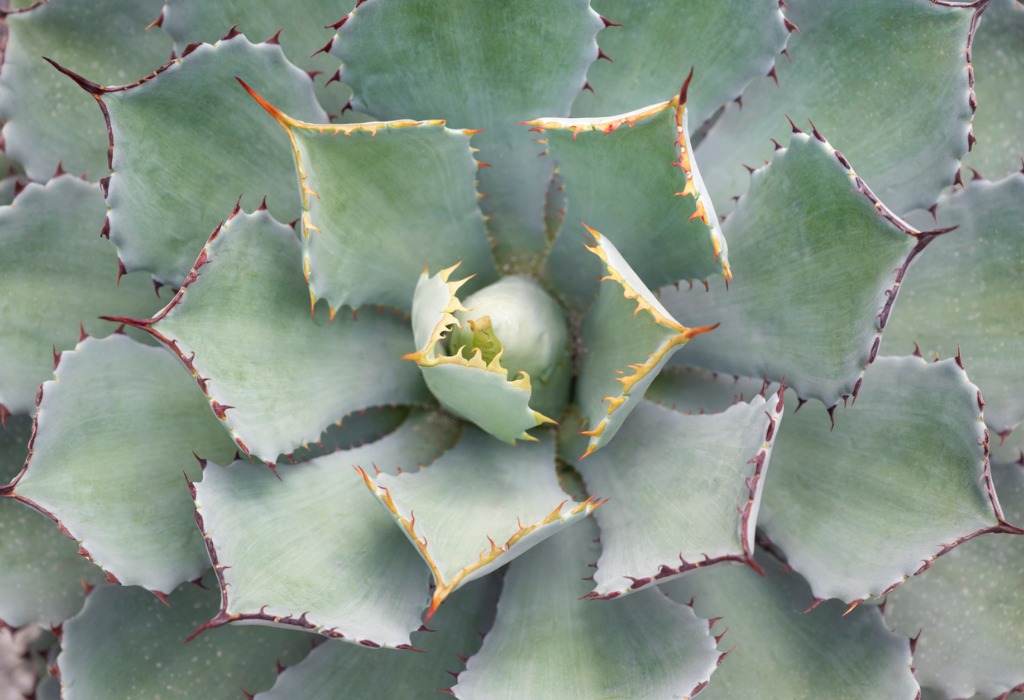Queen Victoria Agave
(Agave isthmensis)

Description
Agave is a genus of monocots native to the hot and arid regions of the Americas, although some Agave species are also native to tropical areas of South America. The genus Agave is primarily known for its succulent and xerophytic species that typically form large rosettes of strong, fleshy leaves. Agave now includes species formerly placed in a number of other genera, such as Manfreda, ×Mangave, Polianthes and Prochnyanthes. The succulent leaves of most Agave species have sharp marginal teeth, an extremely sharp terminal spine, and are very fibrous inside. The stout stem is usually extremely short, which may make the plant appear as though it is stemless. Agave rosettes are mostly monocarpic, though some species are polycarpic. During flowering, a tall stem or "mast" ("quiote" in Mexico), which can grow to be 12 metres (40 feet) high, grows apically from the center of the rosette and bears a large number of short, tubular flowers and sometimes vegetatively produced bulbils (a form of asexual reproduction). After pollination/fertilization and subsequent fruit development, in monocarpic species, the original rosette dies. However, throughout the lifetime of many Agave species, rhizomatous suckers develop above the roots at the base of the rosette. These suckers go on to form new plants after the original rosette desiccates and dies. Not all agaves produce suckers throughout their lifetimes; some species rarely or never produce suckers, while others may only develop suckers after final maturation with inflorescence. Some varieties can live for 60 years before flowering. Agaves can be confused with cacti, aloes, or stonecrops, but although these plants all share similar morphological adaptations to arid environments (e.g. succulence), each group belongs to a different plant family and probably experienced convergent evolution. Further, cactus (Cactaceae) and stonecrop (Crassulaceae) lineages are eudicots, while aloes (Asphodelaceae) and agaves (Asparagaceae) are monocots. Agave species are used as food plants by the larvae of some Lepidoptera (butterfly and moth) species, including Batrachedra striolata, which has been recorded on A. shawii.
Taxonomic tree:







